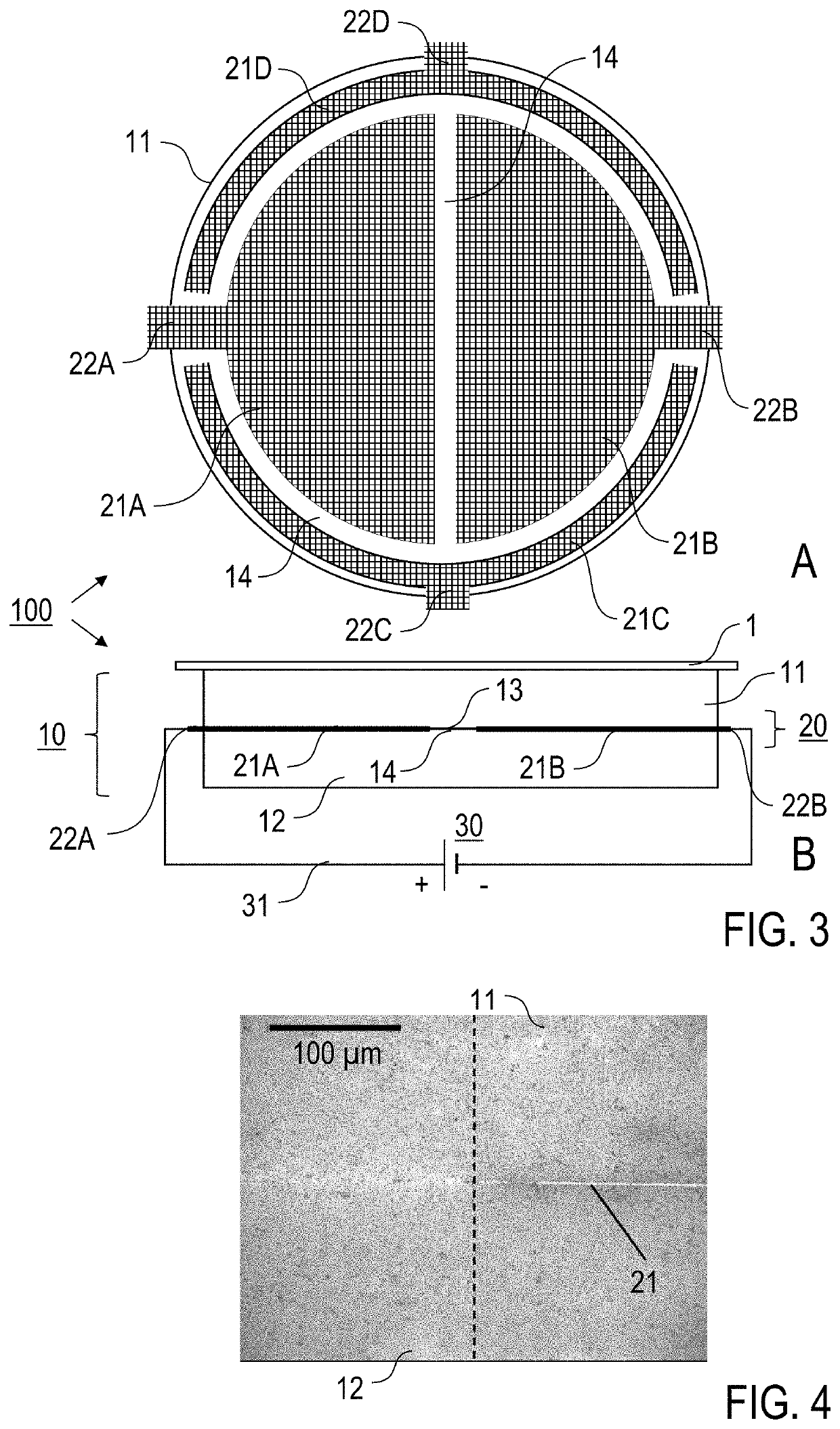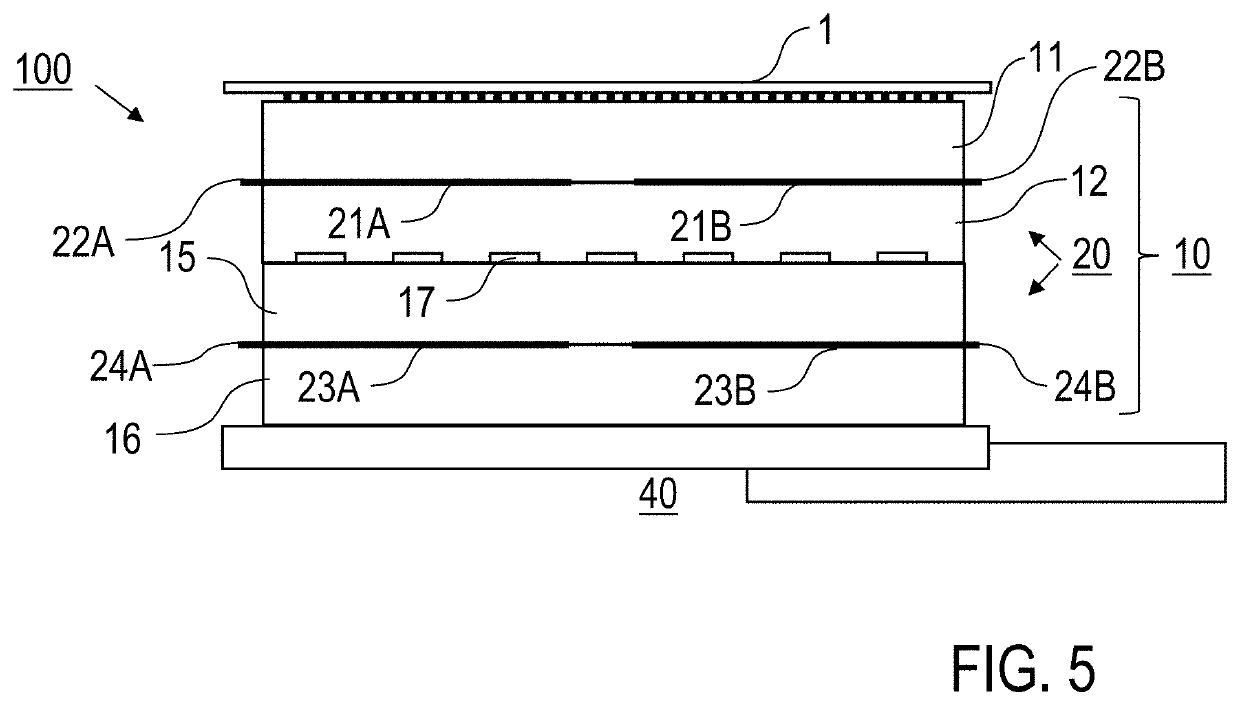Holding apparatus for electrostatically holding a component, including a base body joined by diffusion bonding, and process for its manufacture
a technology of electrostatic holding and holding apparatus, which is applied in the direction of electric apparatus, basic electric elements, semiconductor/solid-state device manufacturing, etc., can solve the problems of limited thermal stability of glued clamps, difficult use of ceramic materials in the manufacture and operation of clamps, adhesive bonding, etc., to avoid the disadvantages of conventional techniques, increase geometric and thermal stability, and high precision and/or tolerate applications.
- Summary
- Abstract
- Description
- Claims
- Application Information
AI Technical Summary
Benefits of technology
Problems solved by technology
Method used
Image
Examples
Embodiment Construction
[0035]According to a first general aspect of the invention, the above-mentioned benefit is achieved by an electrostatic holding apparatus for electrostatically holding a component, in particular a semiconductor wafer, such as e. g. a silicon wafer, wherein the electrostatic holding apparatus comprises an electrically insulating, multilayer base body and an electrode device. The base body comprises at least two electrically insulating base body plates (first pair of base body plates), which are connected to one another over a surface by a joint connection. The base body plates are two components which extend in a main plane and preferably have flat surfaces at least on the sides facing one another. The direction along the extension parallel to the main plane is also referred to as the lateral direction and the direction perpendicular thereto as the thickness direction. The base body plates can also be referred to as disks, layers, or sheets. They can each be made in one piece from a ...
PUM
 Login to View More
Login to View More Abstract
Description
Claims
Application Information
 Login to View More
Login to View More - R&D
- Intellectual Property
- Life Sciences
- Materials
- Tech Scout
- Unparalleled Data Quality
- Higher Quality Content
- 60% Fewer Hallucinations
Browse by: Latest US Patents, China's latest patents, Technical Efficacy Thesaurus, Application Domain, Technology Topic, Popular Technical Reports.
© 2025 PatSnap. All rights reserved.Legal|Privacy policy|Modern Slavery Act Transparency Statement|Sitemap|About US| Contact US: help@patsnap.com



